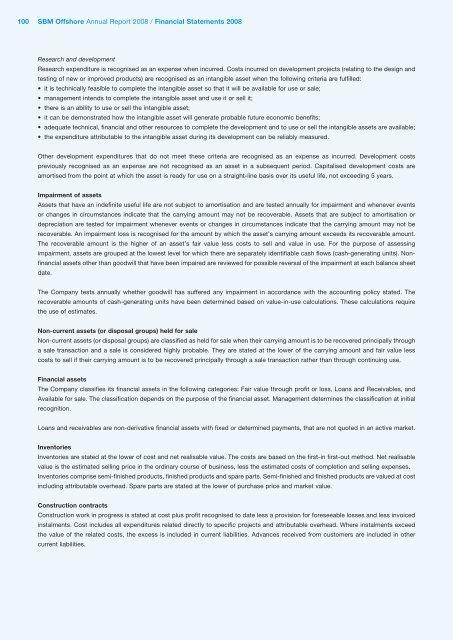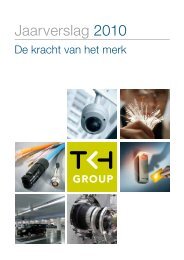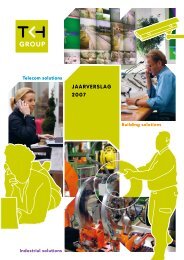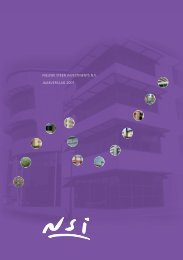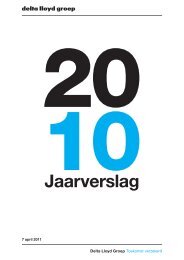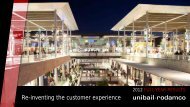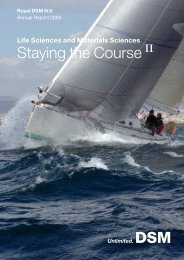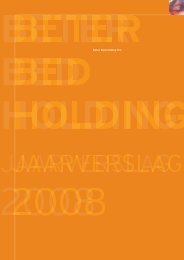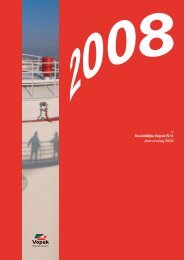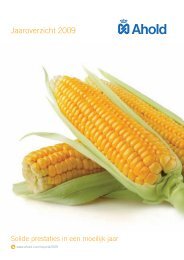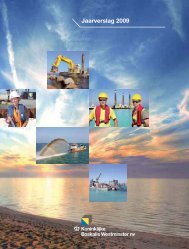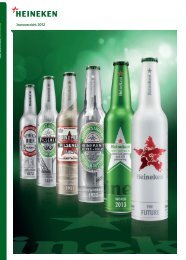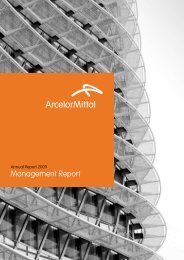2008 Annual Report - SBM Offshore
2008 Annual Report - SBM Offshore
2008 Annual Report - SBM Offshore
- No tags were found...
Create successful ePaper yourself
Turn your PDF publications into a flip-book with our unique Google optimized e-Paper software.
100 <strong>SBM</strong> <strong>Offshore</strong> <strong>Annual</strong> <strong>Report</strong> <strong>2008</strong> / Financial Statements <strong>2008</strong>Research and developmentResearch expenditure is recognised as an expense when incurred. Costs incurred on development projects (relating to the design andtesting of new or improved products) are recognised as an intangible asset when the following criteria are fulfilled:• it is technically feasible to complete the intangible asset so that it will be available for use or sale;• management intends to complete the intangible asset and use it or sell it;• there is an ability to use or sell the intangible asset;• it can be demonstrated how the intangible asset will generate probable future economic benefits;• adequate technical, financial and other resources to complete the development and to use or sell the intangible assets are available;• the expenditure attributable to the intangible asset during its development can be reliably measured.Other development expenditures that do not meet these criteria are recognised as an expense as incurred. Development costspreviously recognised as an expense are not recognised as an asset in a subsequent period. Capitalised development costs areamortised from the point at which the asset is ready for use on a straight-line basis over its useful life, not exceeding 5 years.Impairment of assetsAssets that have an indefinite useful life are not subject to amortisation and are tested annually for impairment and whenever eventsor changes in circumstances indicate that the carrying amount may not be recoverable. Assets that are subject to amortisation ordepreciation are tested for impairment whenever events or changes in circumstances indicate that the carrying amount may not berecoverable. An impairment loss is recognised for the amount by which the asset’s carrying amount exceeds its recoverable amount.The recoverable amount is the higher of an asset’s fair value less costs to sell and value in use. For the purpose of assessingimpairment, assets are grouped at the lowest level for which there are separately identifiable cash flows (cash-generating units). Nonfinancialassets other than goodwill that have been impaired are reviewed for possible reversal of the impairment at each balance sheetdate.The Company tests annually whether goodwill has suffered any impairment in accordance with the accounting policy stated. Therecoverable amounts of cash-generating units have been determined based on value-in-use calculations. These calculations requirethe use of estimates.Non-current assets (or disposal groups) held for saleNon-current assets (or disposal groups) are classified as held for sale when their carrying amount is to be recovered principally througha sale transaction and a sale is considered highly probable. They are stated at the lower of the carrying amount and fair value lesscosts to sell if their carrying amount is to be recovered principally through a sale transaction rather than through continuing use.Financial assetsThe Company classifies its financial assets in the following categories: Fair value through profit or loss, Loans and Receivables, andAvailable for sale. The classification depends on the purpose of the financial asset. Management determines the classification at initialrecognition.Loans and receivables are non-derivative financial assets with fixed or determined payments, that are not quoted in an active market.InventoriesInventories are stated at the lower of cost and net realisable value. The costs are based on the first-in first-out method. Net realisablevalue is the estimated selling price in the ordinary course of business, less the estimated costs of completion and selling expenses.Inventories comprise semi-finished products, finished products and spare parts. Semi-finished and finished products are valued at costincluding attributable overhead. Spare parts are stated at the lower of purchase price and market value.Construction contractsConstruction work in progress is stated at cost plus profit recognised to date less a provision for foreseeable losses and less invoicedinstalments. Cost includes all expenditures related directly to specific projects and attributable overhead. Where instalments exceedthe value of the related costs, the excess is included in current liabilities. Advances received from customers are included in othercurrent liabilities.


